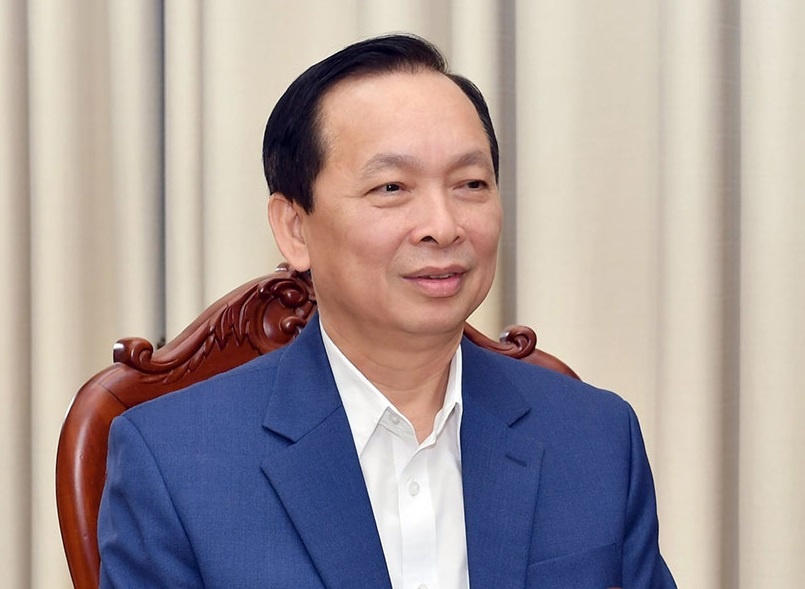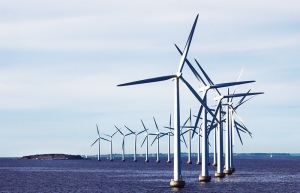Making growth greener
Vietnam has launched its Green Economy Development Strategy, in which green credit activities and green banks play an important role. Can you share some initiatives that the banking sector has recently implemented?
The policies and directions of the state, the National Assembly, and the government in the fight against climate change and environmental protection are obvious, reflected in the international commitments of the Vietnamese government, including the Paris Agreement and at COP26. Vietnam made the commitment to develop and implement stronger measures to reduce greenhouse gases (GHGs) to achieve net-zero carbon emissions by 2050.
 |
| Dao Minh Tu, Standing Deputy Governor of the State Bank of Vietnam |
In that context, the banking sector has also been actively implementing and will continue to implement action programmes to direct the flow of green credit and capital for green economic activities. Accordingly, several contents of the banking industry have been set out and implemented in recent years.
Firstly, it is necessary to build a clear legal corridor, creating conditions for credit institutions to spend resources to support the implementation of green economic programmes, projects, and fields. To achieve this, the State Bank of Vietnam (SBV) issued a green banking development project in Vietnam; integrated the development orientation of green credit and green banking into the content of the strategy for the development of the banking sector to 2025, with an orientation to 2030; and the SBV in December issued Circular No.17/2022/TT-NHNN guiding the implementation of environmental risk management in credit institutions and foreign bank branches.
The SBV is currently coordinating with the Ministry of Natural Resources and Environment – the agency assigned to develop a national green classification list to create clear mechanisms as well as favourable legal frameworks to deploy tools to support national green growth, including green financing activities.
The SBV had previously developed an action plan for the banking sector to implement the National Strategy on Green Growth for 2021-2030, with a vision to 2050 (NSGG). The programme has been implemented in different departments of the SBV and deployed to commercial banks, and now these units are also actively lending to programmes that ensure the goal of combating climate change and key national projects, or even private projects that ensure the index and requirements on environmental issues.
In the coming time, on the basis of the NSGG, the SBV will continue to adjust and supplement specific tasks and solutions for the sector that are more in line with Vietnam’s commitment to reducing GHG emissions and national green growth targets. Furthermore, in addition to completing the general legal corridor of the banking industry for green growth, the industry has implemented specific programmes such as credits for green agriculture and clean agriculture; lending clean water for rural environmental sanitation; and providing loans for houses in storm-hit areas.
Also, policies to develop modern banking services using modern technology to contribute to green growth are constantly being improved. These include a legal framework for payments; implementing a project on the development of non-cash payments; and a scheme to promote payments through banks for the collection of fees for public services.
Finally, the banking sector has been working with relevant government agencies to mobilise more resources from other developed countries, specifically international financial institutions and the World Bank, to invest in green projects and national key projects to achieve the goal of combating climate change.
Can you share some of the specific results that have been achieved in recent times?
By the end of 2022, credit balance for green projects (12 green sectors built and issued by the SBV since 2017) reached nearly VND500 trillion ($21.3 billion), accounting for about 4.2 per cent of the economy’s outstanding loans. This mainly focused on renewable and clean energy, accounting for the highest proportion at 47 per cent, followed by green agriculture accounting for over 30 per cent.
Credit institutions actively carried out environmental and social risk assessment in credit extension activities with outstanding loans of more than VND2.2 quadrillion ($95.6 billion), of more than 1.1 million loans. Notably, in the period of 2017-2021, the system’s credit balance for green fields had an average growth rate of more than 25 per cent each year, higher than the average growth rate of the economy’s general credit.
This number represents the effective results of the banking sector, closely following the orientation, requirements, and direction of the government on concentrating resources for a green economy.
What have been the most complex issues along this green growth journey?
We still have to frankly admit that there are still many obstacles. For example, we still do not have a national green classification list as a basis for mobilising related financing sources. I think once we have the list with clear environmental criteria, the contribution of the banking industry will be much higher than the current green credit numbers.
In addition, green investment projects need a long payback period, high investment costs, and high market risks, so credit institutions have difficulties balancing capital sources for lending, while we lack mechanisms and policies to receive support capital from international organisations and mechanisms for mobilising green financial resources in the capital market.
To overcome this, the SBV proposed to the prime minister to soon issue a national green classification list according to international standards and in accordance with the legal system of Vietnam, in addition to directing ministries and branches to study systems to support credit institutions to access preferential and long-term capital sources. This is especially helpful for mobilising international resources to facilitate the provision of long-term credits and preferential interest rates for green industries/fields.
At the same time, it is necessary to develop a roadmap to implement mechanisms to support green industries, as stipulated in the Law on Environmental Protection including taxes, fees, capital, technology, planning, and development strategy of each field, in order to attract and promote the effectiveness of green credit capital. At the same time, we need to develop the green bond market, creating a capital mobilisation channel for investors to have resources to implement green projects.
Entering 2023, many issues continue to occur, such as inflation, tightening monetary policy, and the problem of raising interest rates of other countries. On the basis of sticking to the goals of socioeconomic development, the NSGG and the various plans on green growth, the SBV will continue to implement solutions to promote the activities of the banking industry towards the goal of green growth, contributing to supporting economic recovery, with the focus on continuing to perfect the legal framework guiding the implementation of green banking and green credit.
We will continue to implement the banking sector’s dynamic programme to implement the NSGG, contributing to the realisation of Vietnam’s net-zero commitments.
In addition, the banking sector will actively conduct training to improve the capacity of credit institutions in implementing effective green financial instruments and promote solutions to mobilise international resources to support green growth and also more sustainable development.
 | Banks roll out green credits for eco-friendly approach Since the adverse impacts of climate change are better understood, many financial institutions operating in Vietnam are taking bold steps to finance and facilitate green and eco-friendly loan packages as an essential part of their sustainable investment and net-zero pledges. |
 | Building regional strategies for carbon credits in forestry Vietnam’s forestry system is available for building regional planning in service of exploiting forest carbon credit. |
What the stars mean:
★ Poor ★ ★ Promising ★★★ Good ★★★★ Very good ★★★★★ Exceptional
 Tag:
Tag:
Related Contents
Latest News
More News
- Banks gear up for massive capital increases (December 18, 2025 | 17:04)
- Securing capital and efficiency for Vietnam’s 2026-2030 growth ambitions (December 17, 2025 | 10:00)
- Energy sector in need of blended finance mechanisms (December 17, 2025 | 09:00)
- Vietnam still has room to mobilise capital for sustainable growth (December 17, 2025 | 08:57)
- Long-term capital seen as key hurdle to green growth (December 16, 2025 | 08:00)
- Gold prices swing amid tax debate and import uncertainty (December 15, 2025 | 18:04)
- Agribank frames bank credit as catalyst for green growth (December 15, 2025 | 17:59)
- Vietnam’s green transition demands collective financial action (December 15, 2025 | 12:00)
- VIR workshop highlights capital and policy for sustainable development (December 15, 2025 | 11:00)
- Promoting digital assets initiative in Vietnam (December 13, 2025 | 09:30)
























 Mobile Version
Mobile Version